From the 16th to 18th centuries, the Enlightenment, Romanticism, and Realism periods focused more on the here and now, whether it be real ideas or imagination.
But in the 1900s, those ideas took a significant shift. Creative thinkers began to plan for the future and what lies ahead.
This led to the Futurism era which blossomed during the machine age, where ideas and visions were actually stamped into reality. The idea focused mostly on dynamism and speed, portraying a fast-moving world where changes were occurring.
Futurism was an Italian movement brought about by the famous poet Filippo Marinetti. His ideas spread to Great Britain, Russia, Japan, and other countries abroad.
It appeared first in writings, paintings, and sculptures, helping invent new ideas for the future. It also became visible in architectural designs, helping develop concepts for some of the world’s most famous buildings.
These ideas were seen as positive and negative. The ideas led to great buildings and magnificent paintings over time. But its radical ideas were also the basis of a new government in Italy that turned it Fascist, eventually making them an enemy of the free world in World War II.
While the artistic and political concept of futurism in Italy died in 1944, the implementation of new ideas and putting them into motion continues to be felt today.
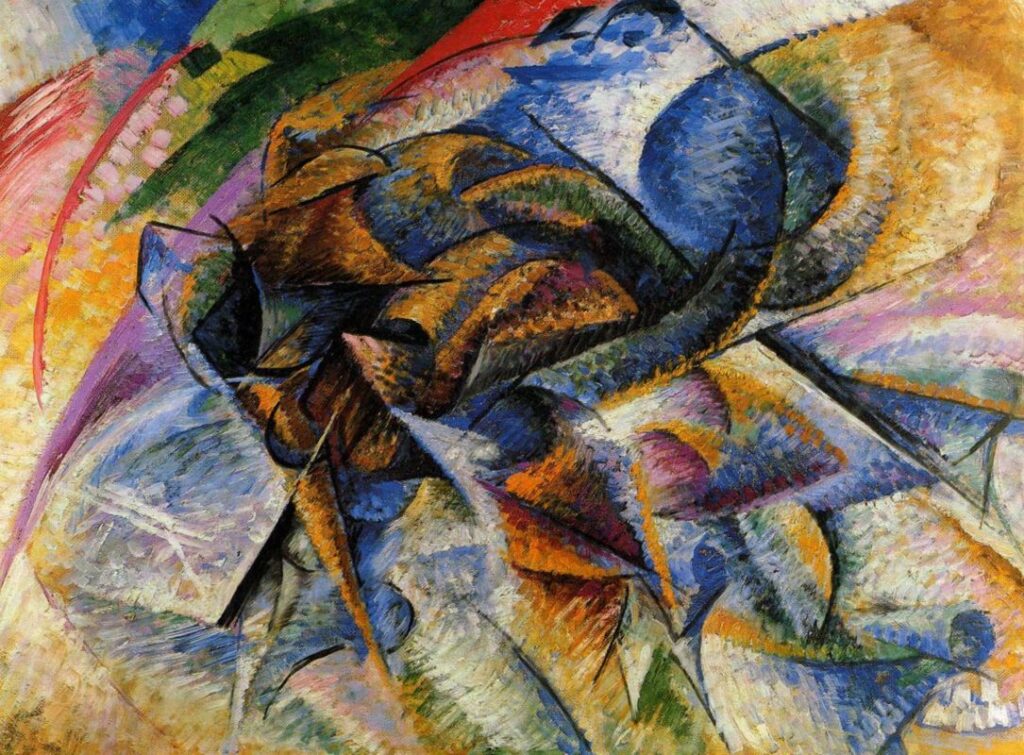
The Futurist Manifesto
In February 1909, Filippo Marinetti’s Manifesto was published in an Italian and French newspaper. The manifesto, which was also known as the “Declaration of Futurism,” laid out this new world where modern means of communication would be used to spread new ideas.
Marinetti’s radical approach was taken up by a handful of artists, and these ideas spread into other practices, including architecture and politics. Benito Mussolini idolized Marinetti and used it as a way to form his new Fascist government which would align with Nazi Germany and be an enemy of the Allies in World War II.
In his manifesto, Marinetti wrote, “We want to glorify war – the only cure for the world – militarism, patriotism, the destructive gesture of the anarchists, the beautiful ideas which kill.” The purpose of this statement was for Italy and Europe to come up with new radical ideas rather than the same ones of the past.
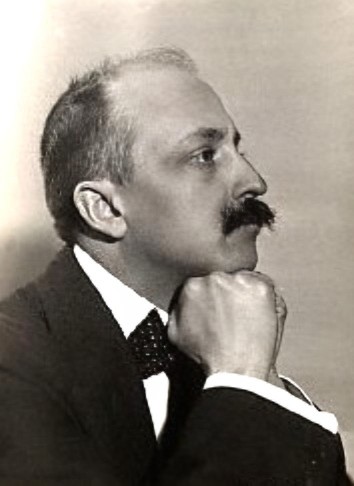
The principles behind Futurism were a knock against eras of the past, where technology and machines thrived over nature. It aligned with what was happening in the world, where new buildings and skyscrapers were being constructed and new inventions were being made almost every day.
Everything was moving at a fast clip, and people used art to illustrate this concept. Soon, it wasn’t just a phenomenon in Italy; it was also being adopted in Russia, England, and other parts of the world.
Inventions that thrived from this Futuristic approach included the speeding train, the automobile, and the airplane. These inventions only became faster with time, corresponding with Marinetti’s desire for speed and motion.
Influence on Architecture
In 1912, artist Antonio Sant’Elia portrayed his ideas in the drawings for La Città Nuova, which stands for “New City.” While the drawing never actually came to life, his idea for a city would be used by architects worldwide.
Sant’Elia declared that “new futuristic architecture should be dynamic and machine-like in its mobility,” a clear alliance with Marinetti’s vision in his manifesto.
One of the main properties that Sant’Elia utilized was flow and movement in the design. Futurist architects were proponents of using concrete, glass, and steel with high-rise skylines and underground networks of space to help accommodate the growing population and businesses.
While Romantics embraced beauty, Marinetti stated in his manifesto, “Beauty exists only in struggle. Poetry must be a violent assault on the forces of the unknown, to force them to bow before man.”
Marinetti also detailed his vision of dynamism by stating, “We declare that the splendor of the world has been enriched by a new beauty: the beauty of speed…a roaring motorcar which seems to run on machine-gun fire, is more beautiful than the Victory of Samothrace.”
Sant’Elia declared all architects “bold, risky, and simple at once.”
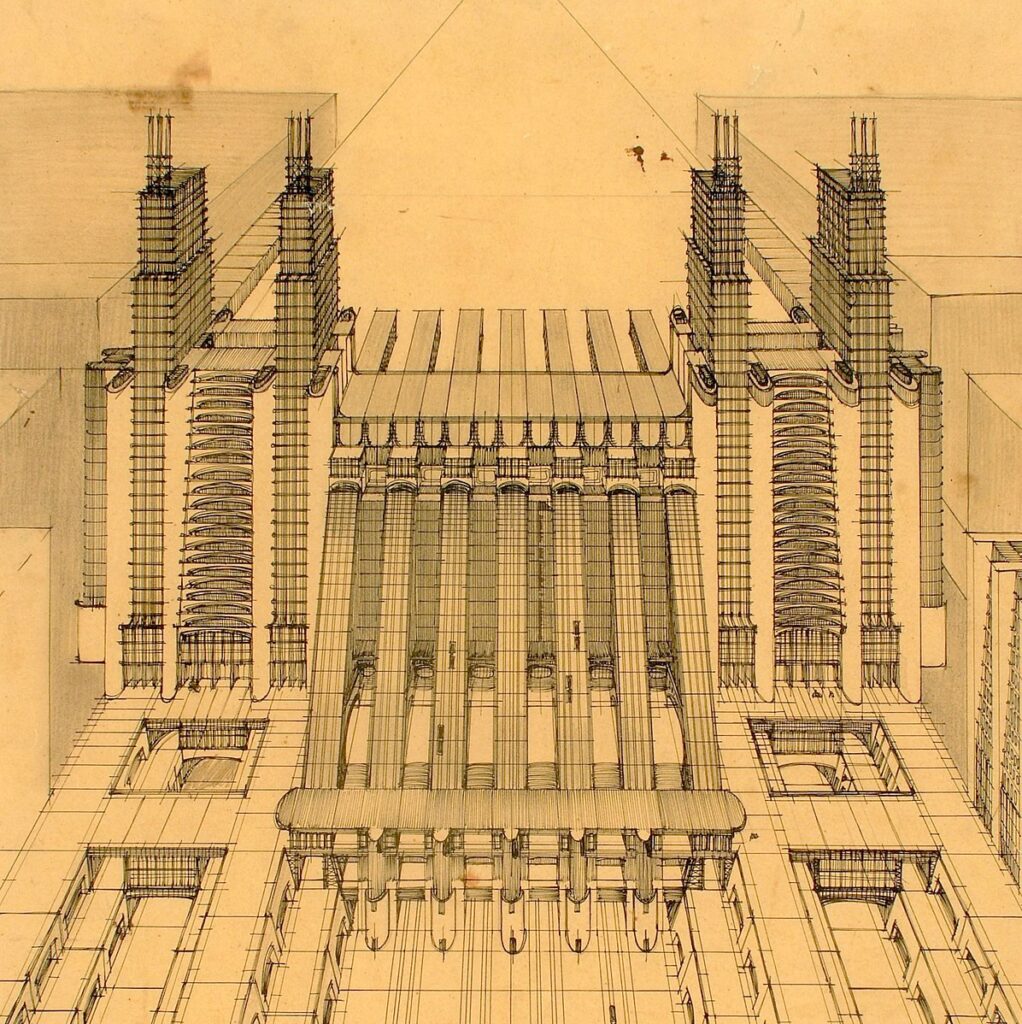
Architects used violent colors and strong elliptical lines, and decorations spoke for themselves. Architects and artists worked together, using visions and drawings to make real-life wonders.
The first country to adopt this outside of Italy was Russia. This is where the artist Tatlin made a city model that represented motion and energy, using concrete, steel, and glass in many of Moscow’s biggest buildings.
Art Deco was one of the famous futuristic design methods. It combined geometric shapes with bright colors, and mixing in other decorative ideas.
This led to some of the most famous structures built worldwide in the 1920s and 1930s, particularly in the United States, such as the Chicago Sears Tower, the Empire State Building, the Eastern Columbia Lofts in Los Angeles, New York City’s Chrysler Building, and Rockefeller City.
Futurism and Art
Among the most famous artists during the futurism era were Sant’Elia, Umberto Boccioni, Joseph Stella, Gino Severini, and Natalia Goncharova.
Boccioni pieced together one of the first paintings of the Futurism era when he unveiled “The City Rises.” It was seen as a celebration of progress that depicts Milan’s electrical power plant.
Boccioni’s work also depicts horses and workers in the background, with the men trying to control the surging animals and struggling. May believe it symbolizes the fast-moving world, foreshadowing the evolution of progress.
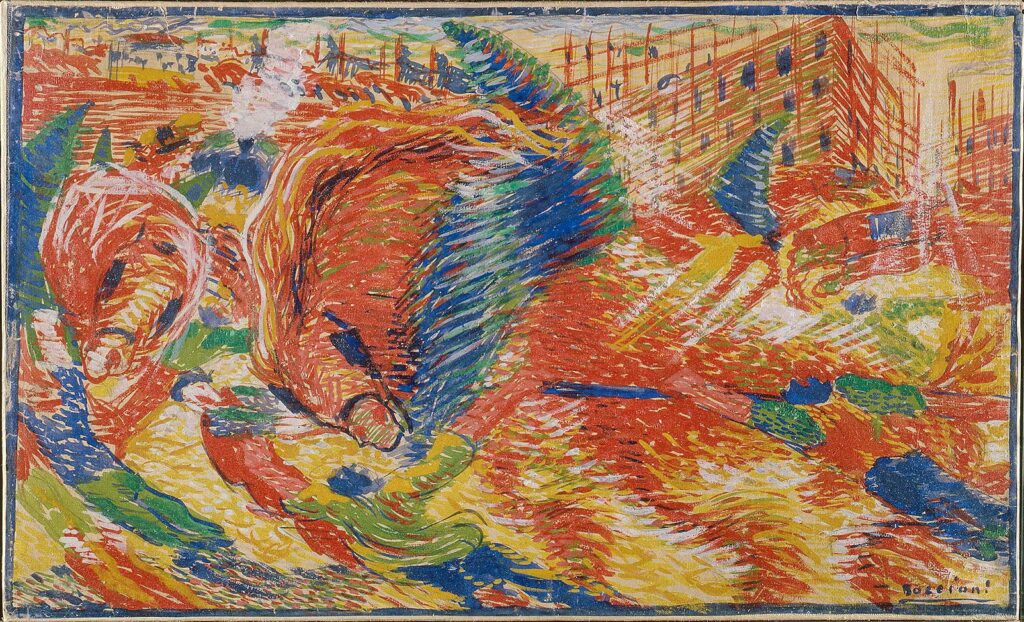
Severini’s famous painting in 1912, “Dancer at Pigalle,” where flashes of light are on a dancer who is making rapid, rotational movements that viewers can’t keep up with in a wheel of motion. It again symbolizes the fast-moving world, where even people are struggling to keep up with the progress being made.
Goncharova’s “The Cyclist” painting in 1913 was more straightforward with the futuristic approach. This illustrates a cyclist pedaling so fast that multiple frames are embedded on top of each other to show the speed at which he or she is moving.
Advertisements are also shown as a potential foreshadowing of the future world.
More paintings were produced in the coming years that foreshadowed the evolution of progress. Ivo Pannaggi’s “Speeding Train” painting in 1922 uses elliptical and diagonal planes to illustrate a lightning-fast train moving faster than anything one has seen before.
In 1930, Alfredo Ambrosi painted an aerial picture of Mussolini’s New Italy, an idea that was meant to spread fascism and also show the excitement of flying.
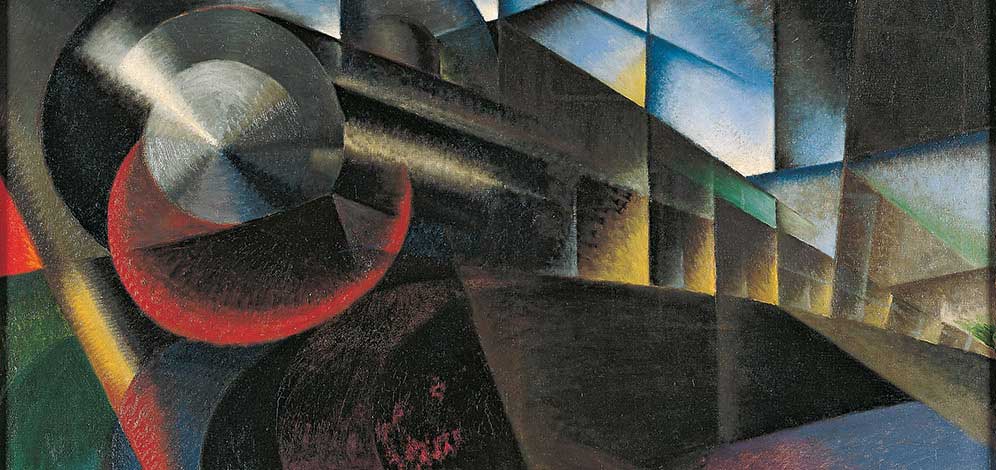
Influence on War
Before the 1900s, wars were fought with muskets, cannons, and swords. When people think back to the Civil War, they imagine one-on-one fighting, not airplanes dropping bombs or machine guns firing from a trench.
Marinetti’s mention of “machine-gun fire” became a reality shortly after his manifesto. World War I introduced a new kind of warfare. It only expanded when World War II came around and airplanes were able to drop bombs.
In reality, the speed with how warfare has developed has never stopped, all stemming back from futurism’s notion of speed and dynamism. Today’s modern warfare continues to illustrate the evolution of technology rapidly changing.
While the Italians came up with the concept of futurism, no one has used it to their advantage more than the United States since the 1940s.
Futurism has the mind always thinking ahead, coming up with new ideas and ways to improve. This was no more evident in wartime than in the race to create the biggest bomb ever invented.
During World War II, the Allies and Axis Powers were in a race to create the atomic bomb, but it was the United States whose ideas came to fruition the fastest, as they successfully ended World War II with their dropping of the atomic bomb on Japan.
Other Concepts
Futurism could be seen in so many industries in the early 1900s. Photography and film were affected, with the Bragaglia Brothers inventing “photo dynamism.”
This showed a figure in motion moving from right to left and everything else in the background blurred. This symbolized the speed at which something was moving, similar to the painting of “The Cyclist” in 1913.
The film industry was also impacted, with cameras constantly upgrading to make movies better.
Marinetti proposed new ways to show literary expression, developing parole in liberta, or “words of freedom.” The purpose was to create literature and poetry that used more verbs and symbols in writing rather than a focus on adjectives, syntax, and punctuation.
As a result, poetry described more action rather than feeling, such as the sounds of gunfire and the speed of trains. New typography was also introduced and graphic design was implemented in poetry.
Futurism’s Decline
As an artistic element, futurism died with the death of Marinetti in 1944, along with several influential artists who fought and died during World War II.
His idea of a radical new government in Europe also came crashing down with the end of fascism and Nazism around the same time. Before Marinetti died, he tried to resurrect the Futurist Political Party to align with Mussolini’s Fascist movement, but it failed.
Still, Marinetti’s vision of a fast-moving world continues today, as technology has taken the world to places never seen before. Inventions seem to be multiplying and populations constantly growing.
The speed at which everything travels only seems to be getting faster and faster, and it seems to have no end.
References
“Futurism.” Useum.org. Nd. https://useum.org/Futurism/What-is-Futurism.
“Manifesto of Futurism.” WM.edu. Nd. Web.
“Futuristic Architecture: Origin, Design & Characteristics.” Study.com. Nd. Web.
“Futurism.” The Art Story. Nd. https://www.theartstory.org/movement/futurism/.